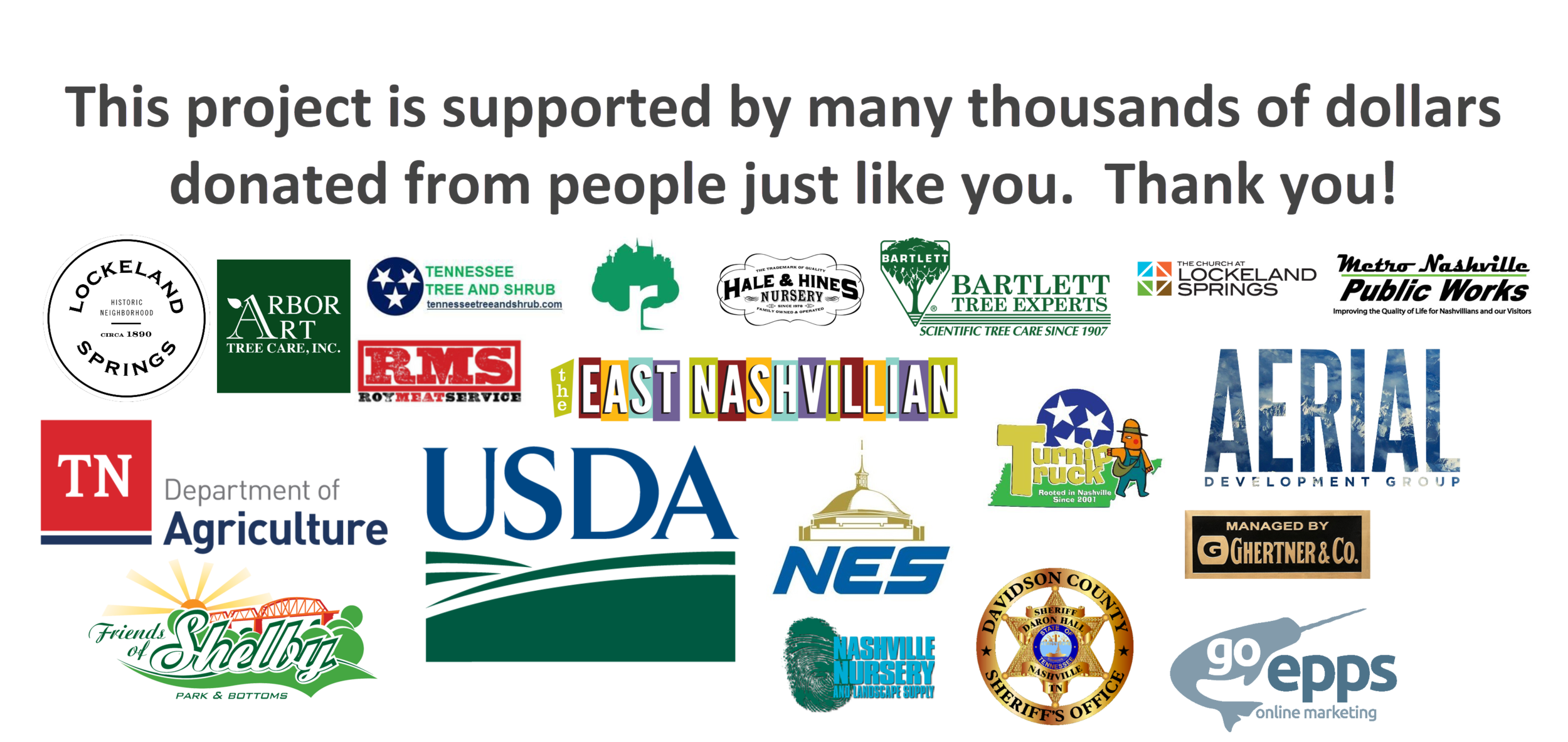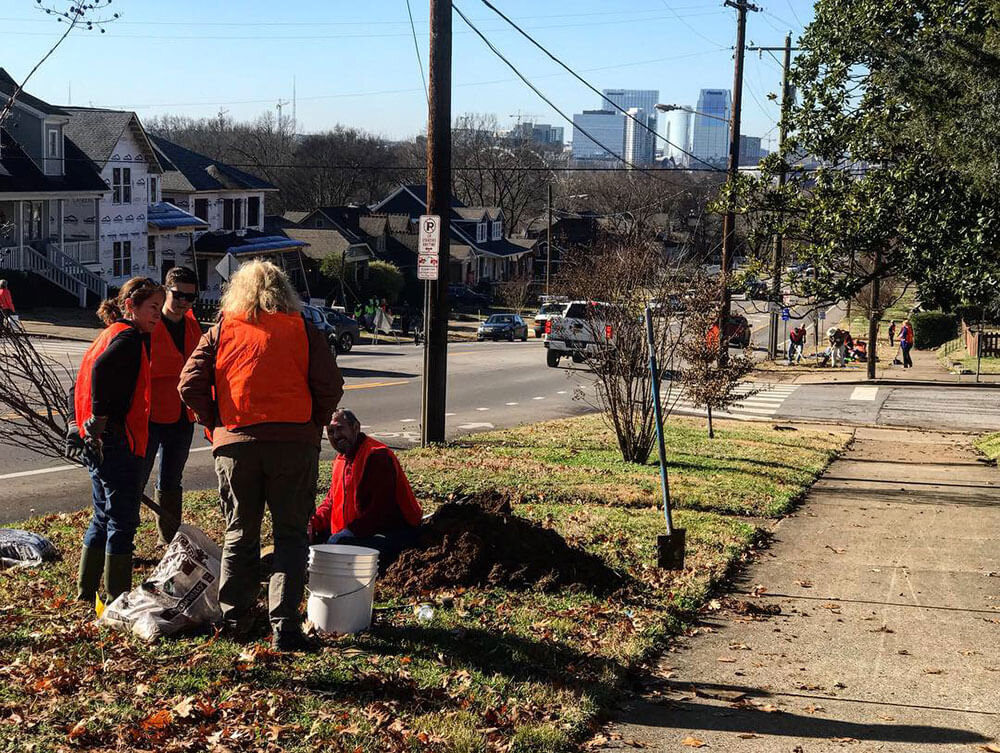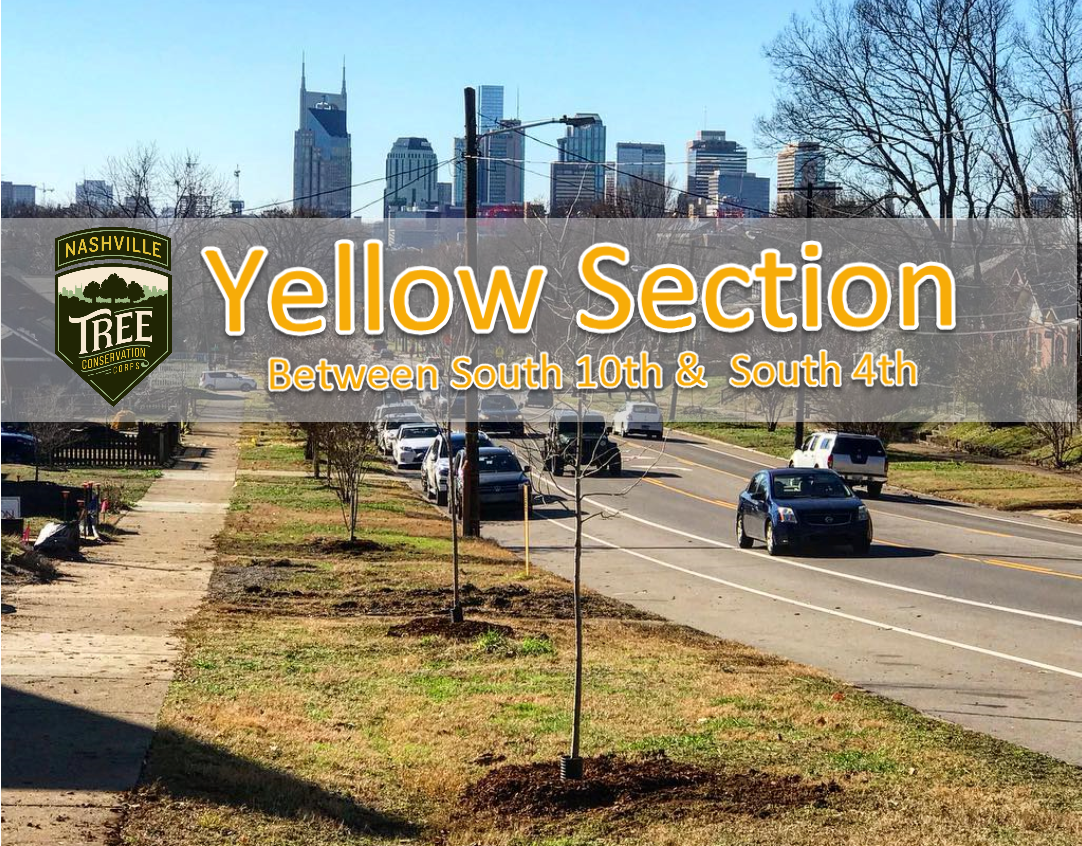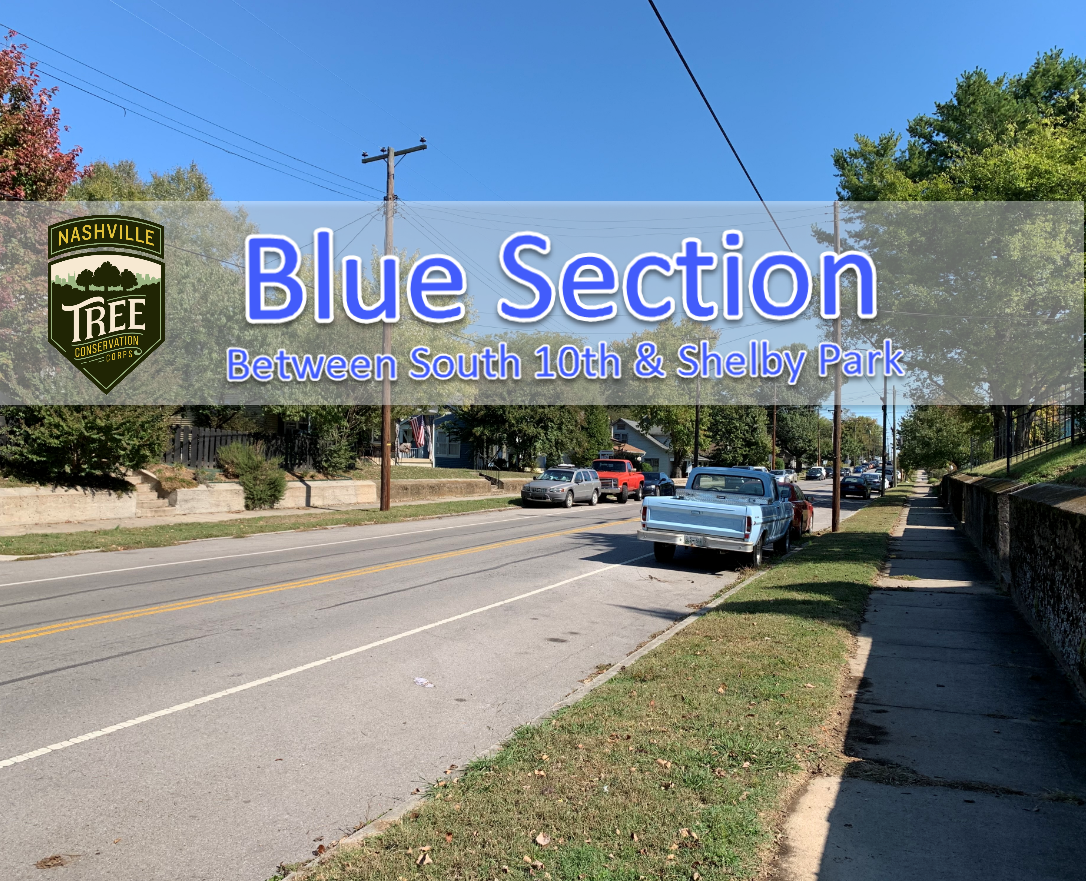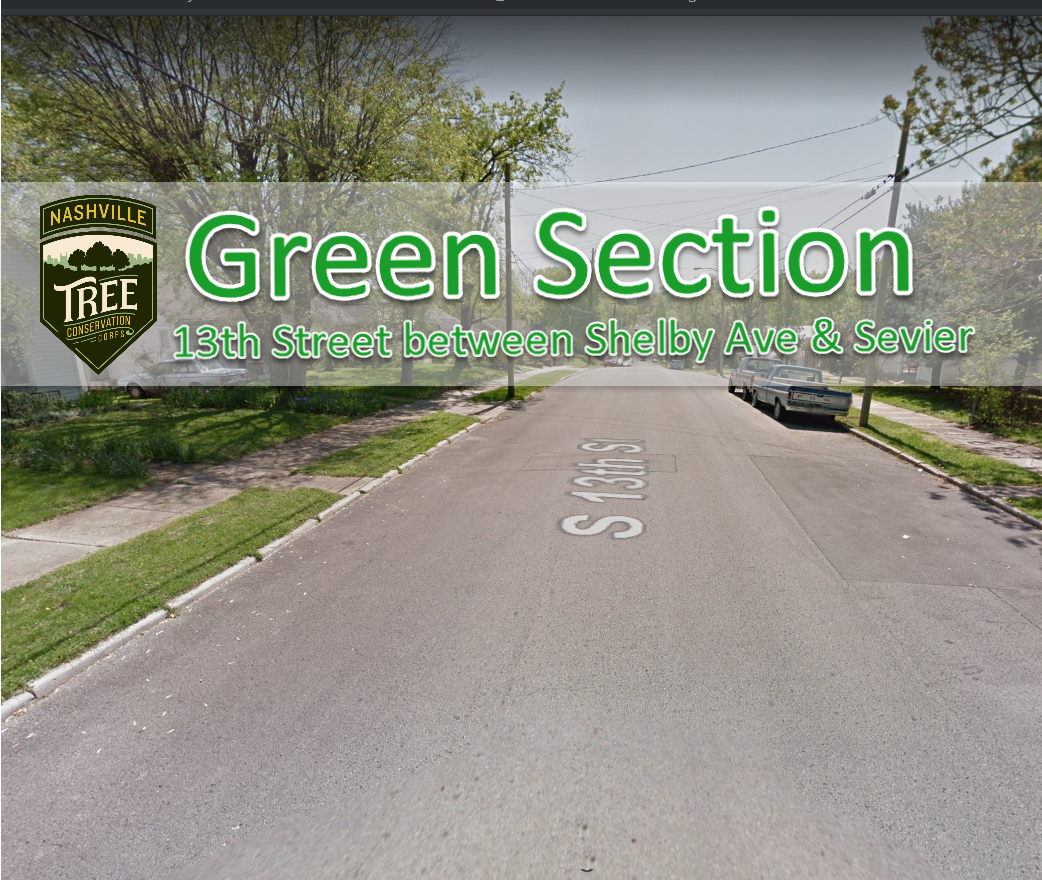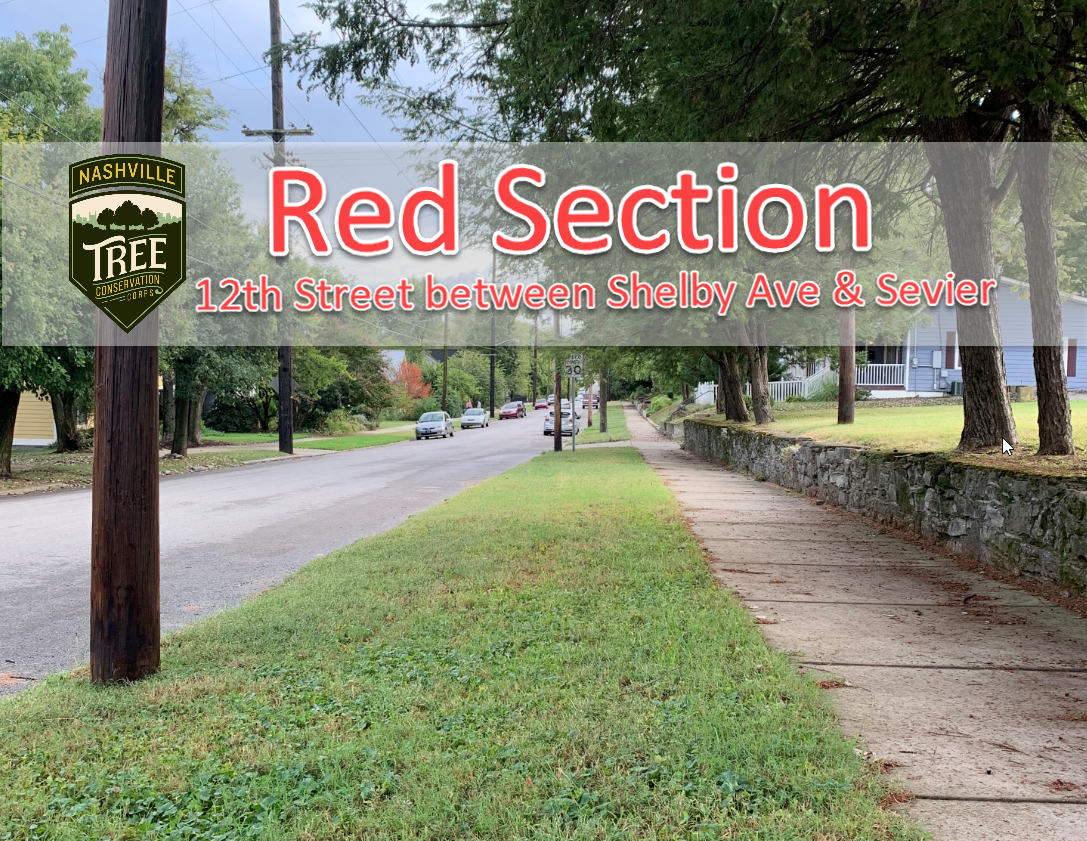A New Vision for Shelby Avenue
A dynamic project to beautify one of East Nashville’s key arteries will launch this fall with the planting of the Shelby Avenue Arboretum. Financed by a coalition of public and private sources, the project will line Shelby Avenue with trees on a 2.5 mile route. Extending from the interstate to the entrance of Shelby Park, it will be one of the longest arboretums in the state of Tennessee. Every tree planted will contribute to Root Nashville’s goal to plant 500,000 trees by the year 2050.
Shelby Avenue is a high-traffic corridor with growing population density. Before the tornado of 1998, this area had some of the best urban tree canopy in all of Nashville, but sadly it has never fully recovered from the effects of the storm. The large grass strips between the roadway and sidewalk on a significant portion of Shelby Avenue make it an ideal area to plant trees. Adding more than 2.5 miles of new shade and understory trees can transform this street into a visually stunning thoroughfare that contributes many benefits.
Project in memoriam of Betty & Martin Brown
Multi-Year Timeline
The project was conceived and developed by the Nashville Tree Conservation Corps in partnership with the Metro Tree Advisory Committee, Metro Public Works and Friends of Shelby Park and Shelby Bottoms. The arboretum is a true public-private partnership, financed by donations from Nashville businesses, as well as grants from local, state and federal agencies.
Implementing the arboretum is a multi-year project. Phase one, planting and retention, will begin in fall 2020 and extend into the winter. Phase two will be installation of signage for each tree variety and for other educational components of the arboretum. The third and final phase will establish a maintenance fund that will perpetually maintain the project. The arboretum will include approximately 500 trees in a variety of shapes and sizes. Where possible, large hardwood shade-producing trees will be planted. In sections constrained by overhead utilities, smaller understory trees such as Redbuds will be used. The arboretum will include a combination of these colorful trees in a composition designated the “East Nashville Colorburst,” consisting of Redbud trees with yellow, orange, red, green, white variegated and red variegated leaves.
Sites, selections and maintenance
Shelby Avenue is divided into two parts for the arboretum: the western half is the Yellow Section, which leads from the interstate to 10th St. The eastern half, from 10th St. to Shelby Park, is the Blue section. Between the two ends, each section will contain trees from medium to large sizes and a mix of flowering trees and trees of many different colors. Some of the flowering trees planned include Cherry trees, Tulip Poplars, Eastern Redbuds, Saucer Magnolias and Dogwoods. Robust trees like Maples (Sugar and Red), Oaks (Swamp and Pin), Sweetgum, Frontier Elms, and Ginkos will grow into a large canopy that will shade the sidewalks along this sunny and open route.
Two other sections, Red and Green, are about halfway through the corridor, on two streets off of Shelby Avenue (12th and 13th Streets). These areas will be planted with attractive Cherry Blossom varieties and Redbuds that will transform the feel and atmosphere of the streets. The Cherry trees will benefit residents and visitors alike: pale pink blooms in early spring will give way to thick green foliage, providing shade from the summer heat.
Every tree will have a tree diaper installed to help ensure moisture retention during the hot and dry summer seasons.
Using a variety of tree species is an important practice in urban areas, where trees are chosen and planted as individuals rather than part of a spontaneous growth of woods. Choosing among a diversity of native and imported tree species helps prevent widespread damage from insect infestations and plant diseases, as has happened in the past with blights like Dutch Elm Disease. Tree maintenance, such as trimming lower limbs, will be conducted by NTCC staff, community volunteers and Metro Tree Advisory Committee volunteers. To revitalize and maximize Shelby Avenue’s composition of trees, some existing trees will be removed or pruned. Most of the trees to be removed are aging crab apple trees between 10th Street and 5th Street, and any Ash trees, due to damage from the incoming Emerald Ash Borer beetle. Trees of mature size will be trimmed to increase structural integrity and safety if any damage or malformations are spotted by certified arborists.
A significant portion of the project will be planted professionally, but there will also be community tree-planting opportunities to kick off and finish the planting phase of the arboretum. This could be a way for anyone in the community interested in trees to get involved and learn more about the project.
Keeping Trees in the City
Some of the trees being planted, like the Sugar Maple, the Swamp Oak and the Sweetgum, will live up to or beyond 300 years. The Tulip Poplar, a tall tree named for its small yellow and orange flowers, can live up to 500 years. Some of the smaller trees, like the Cherry or Magnolia, have shorter lifespans, but careful maintenance can ensure these trees live full, healthy lives and are succeeded by other trees when the time comes.
This project aims not only to beautify the city for residents and tourists, but also to contribute to the cultural life of the community through the actions of planting and maintaining trees. Throughout the project there will be educational exhibits to help teach residents and future generations the importance of trees by allowing them to experience the dazzling array of tree options available that they too could plant in their yards.
Planting trees along the Shelby Avenue corridor extends and fortifies the green spaces along Shelby Avenue, from Shelby Park into the city’s downtown center, a demonstration of the Tree Corps’ mission to support the co-existence of trees and urban spaces. The parks along the Cumberland River were set aside a century ago, and the forethought of the Shelby Avenue Arboretum project today will impact the city for centuries to come.
We’d like to extend a sincere thank you to the sponsors who have made this legacy project possible. If you’re interested in learning how you can contribute financial resources to this project or participate in our activities, please email help@treeconservationcorps.org. NTCC strives to be a good resource for anyone interested in urban forestry and maintaining trees in Nashville. Our success, and the benefits to our city, are based on these kinds of important contributions.




